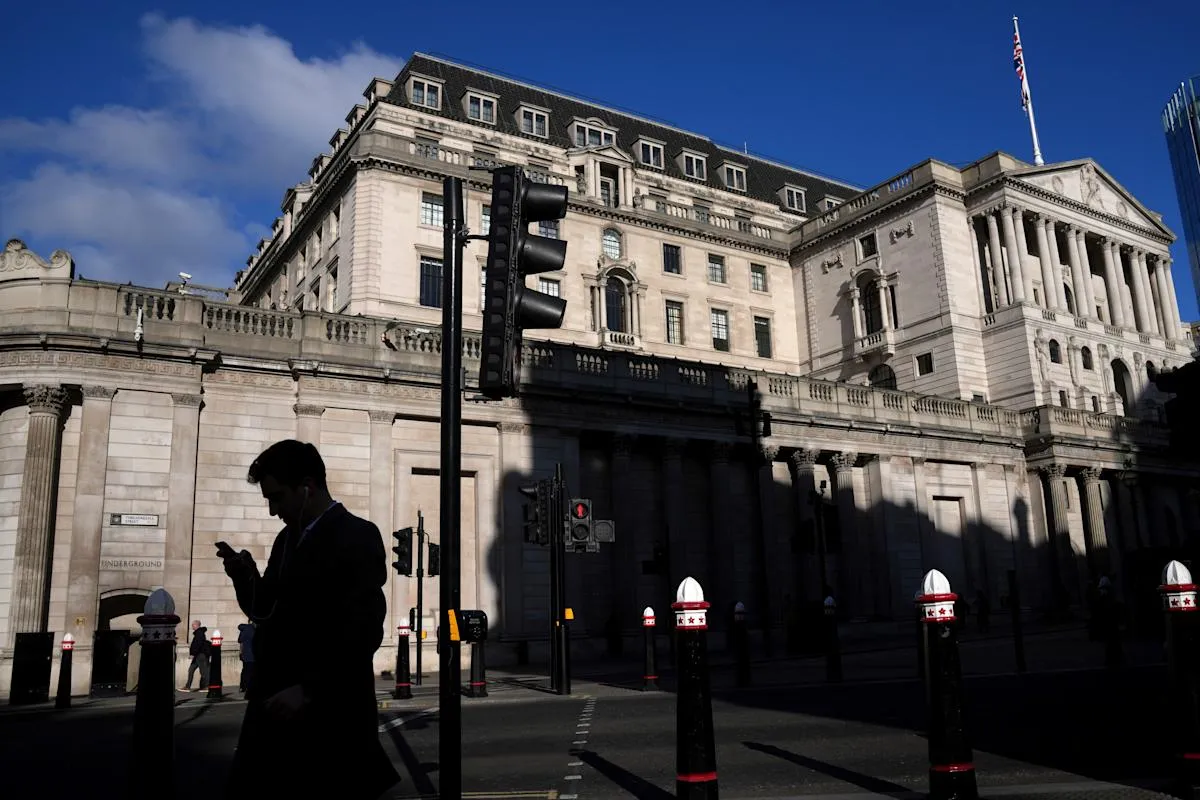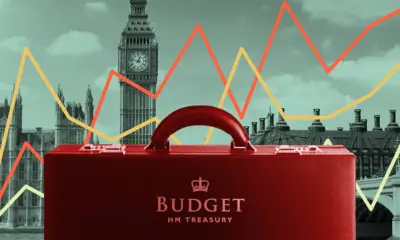Business
Pill’s Pragmatic Path: How Huw Pill’s Strategy Speech Could Shape Future Bank of England Rate Decisions

Introduction
In May 2025, Huw Pill, the Chief Economist of the Bank of England, delivered a speech titled The Courage Not to Act. His remarks outlined a disciplined and thoughtful approach to monetary policy, one that emphasizes patience and data over haste and reaction. The United Kingdom has spent several years navigating economic turbulence, with inflation gradually receding after persistent highs. Pill’s message arrived at a critical moment when the Monetary Policy Committee must decide how to balance growth and price stability. His words signal how the Bank may approach rate decisions in the coming quarters and what that could mean for households, investors, and businesses across the country.
Pill’s Guiding Principles
At the core of Pill’s argument is a belief in restraint. He cautioned against acting too quickly in response to short-term movements in data, instead urging policymakers to wait for reliable confirmation before changing direction. This measured stance reflects his understanding that monetary policy operates with long and uncertain lags. When the Bank raises or lowers interest rates, the effects ripple through the economy slowly, influencing mortgage costs, business investment, and consumer confidence over many months.
Pill noted that while inflation has fallen from its peak, the journey back to the two-percent target is not yet secure. Wage growth, though moderating, remains stronger than historical averages. The services sector continues to show signs of tightness, suggesting that price pressures could resurface if policy eases too soon. He also warned that external shocks such as energy volatility or supply disruptions could complicate the picture. For these reasons, he encouraged the MPC to act only when evidence supports durable progress rather than reacting to temporary trends.
A Strategy of Balance and Flexibility
Pill’s philosophy places heavy emphasis on flexibility. He believes the Bank must preserve the ability to respond to new information without being locked into a fixed path. This approach acknowledges the limits of forecasting and recognizes that even the best models cannot predict every outcome. By keeping options open, the Bank can adapt to changing global and domestic conditions while maintaining credibility.
His comments highlight a shift away from rigid forward guidance. Instead of promising a schedule of rate changes, Pill favors data-driven decisions at each meeting. This allows the MPC to adjust as the facts evolve, promoting stability and transparency. For businesses and households, this means policy will remain predictable not through pre-announced steps but through consistent reasoning and communication.
Impact on the Monetary Policy Committee
Within the MPC, Pill’s tone carries weight. As the chief economist, he influences how data are interpreted and how models are designed. His call for patience strengthens the position of members who prefer to see inflation fully under control before cutting rates further. It may also temper those eager for faster easing to support growth.
Recent voting patterns suggest the committee remains divided but leaning toward gradualism. Pill’s arguments about asymmetric risks resonate with colleagues who fear that acting prematurely could undo recent progress. In his view, the cost of waiting a little longer is smaller than the cost of losing control over inflation. This reasoning has already shaped market expectations, with investors adjusting forecasts for the timing of the next rate reduction.
Economic Context and Market Reactions
The broader economic environment provides both challenges and justification for Pill’s cautious stance. Inflation has eased to just above two percent, but economic growth remains subdued at around one percent. Consumer spending is stable yet fragile, reflecting both improved real incomes and higher borrowing costs. The unemployment rate has risen slightly to four and a half percent, signaling some cooling in the labor market.
Financial markets have responded calmly to Pill’s remarks. The pound strengthened modestly after his speech, and gilt yields held steady, indicating confidence in the Bank’s steady-hand approach. Mortgage lenders have adjusted expectations as well. The average two-year fixed rate remains near four percent, reflecting an assumption that the Bank will reduce rates slowly and predictably. This steadiness provides a measure of reassurance to homeowners and investors who have endured several years of uncertainty.
Risks and Limitations of the Approach
Pill’s strategy is not without challenges. A policy of restraint can be misinterpreted as indecision, particularly when growth slows. Critics argue that maintaining high rates for too long could weaken investment and consumer confidence. Others caution that global events, such as renewed energy shocks or disruptions to trade, could force the Bank to act more decisively than his framework allows.
Another difficulty lies in communication. Pill’s preference for conditional statements requires careful messaging to avoid confusing markets. If investors perceive mixed signals, volatility could rise. Maintaining a consistent narrative about data dependence will therefore be crucial.
Moreover, the evolving political landscape adds complexity. Fiscal policy choices, government spending plans, and wage negotiations all influence inflation dynamics. The Bank must coordinate indirectly with these forces while preserving its independence. Pill’s emphasis on evidence-based policymaking aims to protect that independence by grounding decisions firmly in data rather than political pressure.
Global Comparisons
Pill’s thinking aligns with the cautious stance seen among other major central banks. The US Federal Reserve and the European Central Bank have both adopted similar language, emphasizing flexibility and patience. This international alignment helps stabilize currency markets and prevents sudden capital outflows. It also underscores the shared understanding that the post-pandemic economy still faces unpredictable supply constraints and demographic shifts that complicate monetary management.
The Bank of England’s measured tone positions the United Kingdom within this broader framework. It signals to investors that the Bank remains committed to its inflation target while recognizing the need to support sustainable growth. Pill’s strategy thus contributes not only to domestic stability but also to maintaining the country’s reputation as a credible and disciplined financial center.
Outlook for the Months Ahead
Looking forward, the MPC’s next decisions will depend heavily on inflation data, wage trends, and energy prices. If these continue to improve, gradual rate reductions are likely by mid-2026. However, any renewed inflationary pressure could delay that process. Pill’s influence ensures that each step will be carefully justified and communicated.
His cautious optimism reflects confidence that the worst of the inflation cycle is behind the UK but also awareness that recovery remains fragile. Businesses are beginning to invest again, consumer confidence is improving, and financial stability indicators are strong. These are early signs that patience is paying off.
Conclusion
Huw Pill’s pragmatic philosophy represents a steadying force at the heart of British monetary policy. His speech underscored the importance of patience, flexibility, and data-driven judgment. By advocating a careful and adaptable approach, he has set the tone for a period of deliberate decision-making rather than reactionary policy swings. For the UK economy, this means that future rate changes will come slowly, guided by evidence and aimed at long-term stability. Pill’s message of courage in restraint may prove to be exactly what the Bank of England needs to guide the country through its next economic chapter.




















